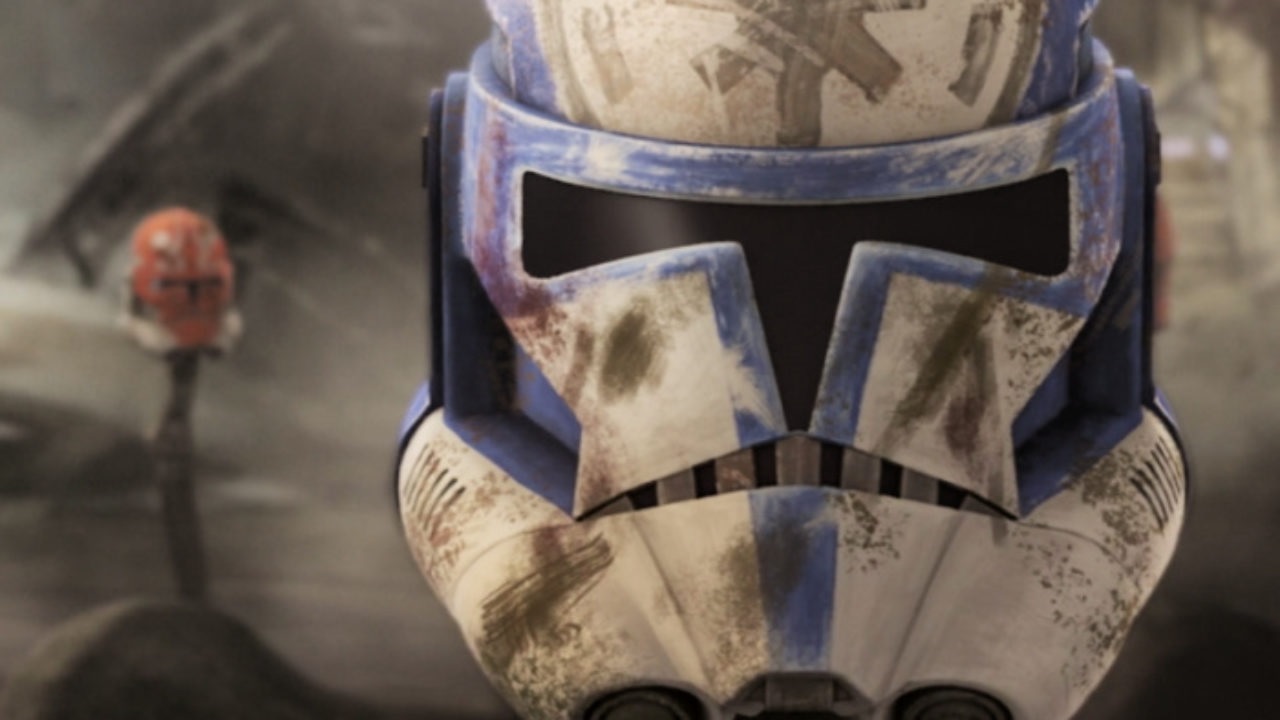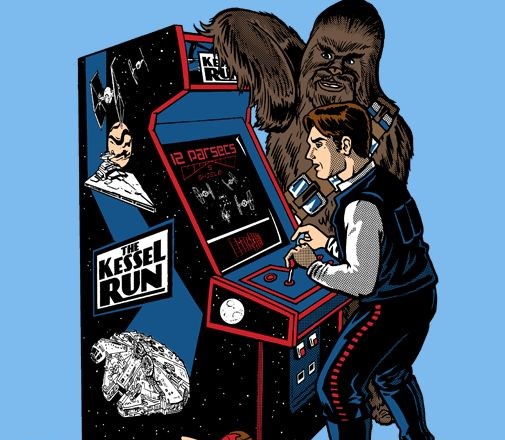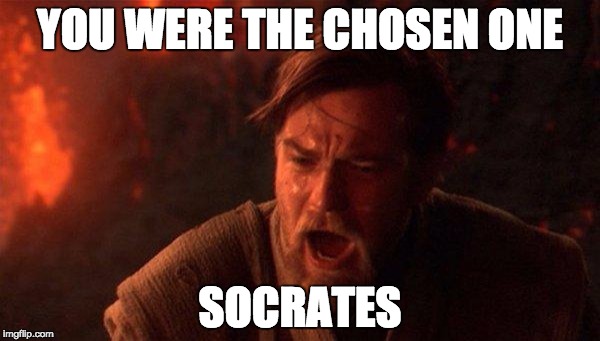“General Kenobi, years ago, you served my father in the Clone Wars…”

That simple opening phrase first spoken by the tiny blue hologram of a captured Rebel princess ignited the imaginations of millions of viewers in 1977 and on down through the years. The real trick of it was there had already been so much world-building going on, evil empires and a desert planet and fugitive droids and the tiny hooded nomads who scavenge them and a teenager who just wants to get out of town on his trusty landspeeder.
So that just after, we meet the space wizard and are now only 35 minutes into this experience (back when, remember, the entire Star Wars experience lasted 2 hours and 4 minutes), when she intones those two magic words “Clone Wars,” they detonate in the minds of viewers still breathless and reeling with the wonder of all they’ve seen and the promise of what’s yet to come. Even better, there was no callback. When we meet Han Solo & Chewbecca, they didn’t fly in these Clone Wars, they were too busy making the Kessel Run in 12 parsecs. Again, whatever that was…
The real trick that George Lucas accomplished — along with fusing archetypal mythological content as diverse as Joseph Campbell and Akira Kurosawa and executing while inventing cutting-edge special effects that went on to redefine the entire film industry — is this really cool thing with enthymemes.
You ever heard of an enthymeme? Aristotle first presented the idea as a rhetorical syllogism, as in, we are given two points: 1) Socrates is a man, and 2) All men are mortal, which of course implies the immediate third point: Socrates is mortal. Famous experimental novelists like Laurence Sterne or James Joyce adopted this technique and it was all very literary and generated many Master’s theses, but how cool is it when Lucas does it: 1) Some time before this brand-new story that you are now watching began, there was something called The Clone Wars, and 2) This is what it looks and sounds and feels like when you are experiences 2 hours and 4 minutes of something called Star Wars.
Even tiny children latch onto this instinctively, imaginations racing as fast as they can to conceive of what these Clone Wars could possibly be. Are they an army of clones bred as a worker-class who rose up against the Old Republic and finally had to be put down by the Jedi and a bunch of droids? Two different factions of clones that started a civil war and got the whole galaxy caught up in the battles? My knee-jerk thought as a very little boy did not allow for the years of even sped-up growth and indoctrination that we eventually learned about on Kamino. I wanted instant clones. Like, two Jedi have this one guy flanked and then the guy suddenly starts erupting, just mass-producing a battalion right there out of his back and arms and legs like somebody dumped some water on a Mogwai trooper, and the Jedi can barely contain him/them.
The coolest thing sometimes isn’t what these stories we love so much show us, it’s what they inspire us to create, sometimes even without deciding to. The term “fan-fiction” has a pejorative connotation, but it’s been happening in the comic-book industry since the 1970s when Roy Thomas, Marv Wolfman, Len Wein, and Jim Shooter started turning in scripts, and gentlemen who grew up loving comics like Alan Moore, Grant Morrison, and Neil Gaiman also went on to make no small amount of paradigm-shifting contributions to the medium in their own time. So, all of this to say, I went through a complicated little dance there in the back end of Lucas’s prequel trilogy when EPISODE II ends and begun The Clone Wars have, and my first response was, “Wait, after 25 years, you’re just going to do it all in between the last two parts?” That seemed like a total ripoff that was then completely mitigated by Genndy Tarkovsky’s stunning animated vignettes that led right up into EPISODE III.
So. When Lucasfilm announced this new THE CLONE WARS series, I really didn’t see the point. There were some battles. We got to see some of the random crew from the arena on Geonosis do cool stuff, and we met Asajj Ventress (Nika Futterman), who was way cooler than anybody was suspecting. What Tarkovsky and his crew accomplished was as close to the approaching-infinity level of impossible awesomeness inspired by hearing Hologram-Leia first utter those words all those years ago as anyone was ever going to get.
But this new guy Dave Filoni, over the course of years and years, he did the impossible…
- He made Anakin both sympathetic and relatable (along with Matt Lanter’s incredible voice-work).
- He introduced a plucky new Padawan sidekick and made her one of the best characters in the franchise’s history (again, all praise due to Ashley Eckstein).
- He even pulled off the ultimate storytelling feat for this set-up: take us on the journey of a group of five clones from boyhood through indoctrination into warfare and not only differentiate them but make us care about every single one of these Clones.
We’ve already gone through the journey he took with this series, getting cancelled after five seasons, getting resurrected by Netflix the next year for a sixth, then finally rising once again for this last battle. So, in Tom Kane’s Republic-serial narrator-voice one last time: TRAPPED! AHSOKA AND REX HAVE BARRICADED THEMSELVES IN WHILE REX’S LEGION OF BROTHERS LASER THEIR WAY THROUGH THE FRAME! HOW CAN THEY POSSIBLY SURVIVE?
Part IV opens with the Williams funeral dirge first heard at the funerals of both Qui-Gon Jinn at the end of EPISODE I and Padme Amidala at the end of EPISODE III. It’s an immediately crushing way to set the tone for what follows, which is not quiet or mournful at all but rather a relentless breakneck adrenaline charge to ultimate resolution. What I love about this episode is how massive and important the relatively small stakes that we see here feel as played out in parallel with everything we already know is breaking down on Coruscant and Mustafar in EPISODE III. I mean, I’m not trying to minimize the action here, but we’re not on the galaxy-level stakes of the other movie.
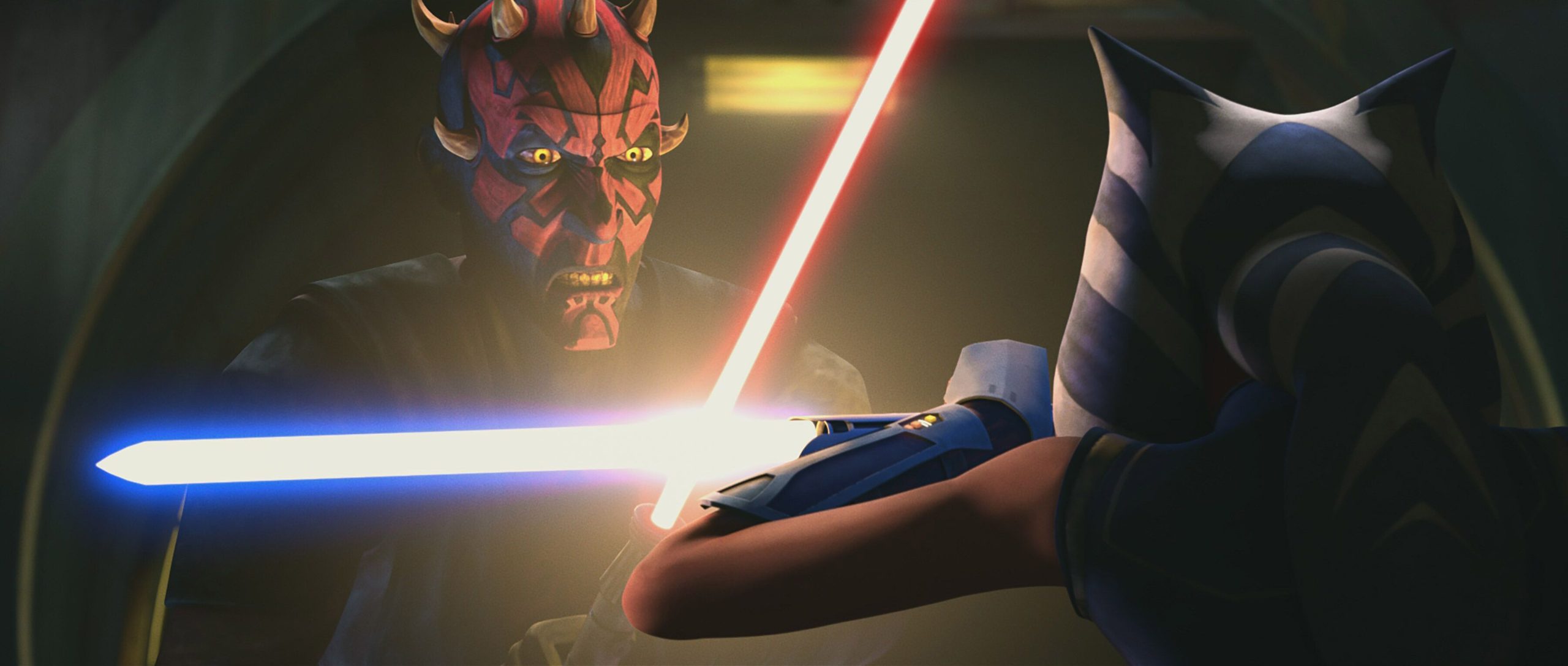
Here, the questions are basically Will Ahsoka & Rex escape? (and we already know they will, so it’s really just How?), and What Will Be The Final Resolution With Maul? This isn’t the final fate of the Republic or the rise of the Galactic Empire at all, but it all feels that important. Every blocked blaster-shot, jump, dead-sprint, scene by scene, beat for beat, this feels like some of the most classic Star Wars action we’ve ever laid eyes on.
The deal with Maul wrecking the hyperdrive is a thing of legend. That’s certainly something we’ve never seen before, and the image of the wrecked Star Destroyer folding down out of hyperspace is all at once timeless and iconic and immortal. A few more allusions in this one. There’s an incredible moment right then where Rex lobs Ahsoka the slow pitch: “We’re caught in that moon’s gravitational field,” and any Star Wars fan in the world has to involuntarily whisper, “That’s no moon,” but that makes no sense, so instead she quotes Dave Bowman and tells him to open the pod-bay doors.
When Ahsoka tries to prevent Maul’s escape, we get a callback to the classic Jedi trial of levitating/restraining a craft. She tries to stop his shuttle, takes hold of it just like Luke failed to and Yoda succeeded in EPISODE V and in the same way that Rey and Kylo Ren squabble over that one shuttle that turned out not even to contain Chewie in EPISODE IX. Later on, when Ahsoka’s tumbling through the sky and Rex is trying to find her through the plummeting wreckage of the Star Destroyer, she appears out of all the smoke and chaos just exactly like the Wicked Witch of the West out of that cyclone in The Wizard of Oz. If only this had all been a dream.
The last time we see Ahsoka, she is now garbed as we will know her in REBELS, and she drops her lightsaber at the graveyard, renouncing her training and all that has brought her to this moment. It’s a powerful earned moment, resonant character work honoring the journey that she and the viewers have taken over all these years.

But okay. That last scene. It levels up even now to such a ridiculous extent, I can still barely process it. It didn’t even look animated, right? Suddenly, they just started rolling cameras on another ice-planet with all those same guys from Hoth. The probe-droid, even. Darth Vader at last makes his entrance months or years after the crash. The shot selection is vast and appalling and beautiful. We’ve come all this way and only but never want it to end. Why can’t we have seasons of this now? But this will be all. Vader approaches the wreck of the Star Destroyer and finds Ahsoka’s lightsaber there in the snow. He reaches down and picks it up.
“This lightsaber is your life.”
Remember Obi-Wan saying that to Anakin after chasing Zam Wesell through all the skyways of Coruscant early on in EPISODE II? For all the hate that that installment has incurred, much of it earned, I always simply loved the hell out of that one little beat. Most of it is the weariness with which Ewan McGregor delivers the line, implying that this exact thing is always happening. Jump back to that narrative-enthymeme deal at the top, and I did the same thing with this. Anakin is always diving headlong into action without a thought for the consequences and quite often losing this one-of-a-kind weapon that he’s fashioned to help preserve peace and order in the galaxy and his master is like, “Kid, if you can’t take care of this, you can’t take care of yourself or any of the rest of us, and you have no business at all doing this.” Which, of course he doesn’t.

But right there, watching EPISODE II on opening night, I was like, “Oh, this is nice. We don’t have time for there to be like a show of Anakin getting trained by Obi-Wan for seasons and seasons, but if there was, I bet this would be a recurring bit, and I like it.” So, I loved it when Filoni did in fact pick up on this and thread it through the various seasons of this series.
Anakin was always dropping his lightsaber.
And now, at the end of everything, it is finally time to pick one up. This reverberates back now to him returning Ahsoka’s lightsabers to her at their last meeting in Part I. At the time, it seemed like a nice beat, but I totally forgot about how this had been a motif running through the entire narrative since the very first time we saw Anakin in action as a heedless young Padawan. It was an incredible inversion to have him deliver his former Padawan’s lightsabers to her after all that time apart, demonstrating his growth in not only taking care of his own situation, but hers as well. The lightsaber symbolizes the Jedi’s commitment to the order, to its teachings, constructed at the end of apprenticeship not only as a weapon, but as a thesis to reflect the full breadth of knowledge and training acquired.
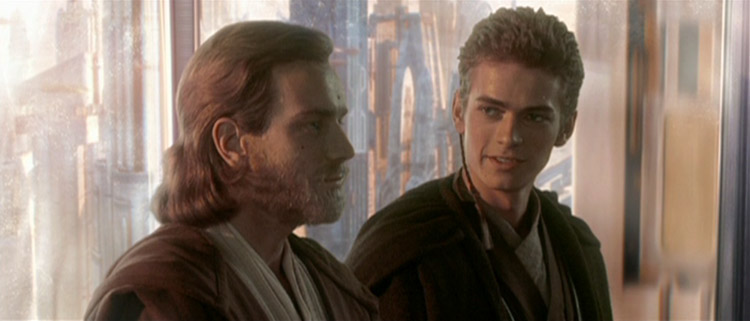
Vader’s decision there at the end to pick up the lightsaber, activate it, and stand there in the snow looking incredible is so much more than just striking an iconic pose, though it’s certainly one for the ages. He looks up into the sky and sees Morai circling overhead, the female convor bird that even long-time viewers might be forgiven for not placing right away after all this, but remember, this bird goes all the way back to the Mortis arc from Season 3 when Obi-Wan, Anakin, and Ahsoka encounter the three supreme Force-wielder beings.
Morai was a spiritual representation of The Daughter, the embodiment of the Light Side, hope and creation. Morai became intrinsically tied to Ahsoka after The Daughter transferred her life-force into her and went on to figure heavily into Season 2 of REBELS and make an extremely memorable appearance very late in that show’s final season as well.
Remember Sidious just blasting the hell out of Mace Windu with Force-lightning in III? “Unlimited poooooower!” Filoni dropping the reflection of Morai in Vader’s red lenses at the end of all this is basically the Light-Side opposite of that. “Unlimited hooooooope!” He’s using long-simmering character motivation and powerful motif symbolism to show that Palpatine hasn’t won. That one day, Anakin’s son will be right. There is still good in him. He holds on to his Padawan’s lightsaber, to his friend’s life that she discarded with much more thought and deliberation than he ever did all those years, all those times Obi-Wan was always there to catch it for him, and he knows that she’s still out there. She lives on. And a part of her, that blue sliver of tenacious unrelenting hope, still lives in him and will one day give him the strength he needs to rise up against his master and redeem himself after all that time.
And it all goes back to what happened not one minute before old Ben Kenobi finally got R2 to play Leia’s full message and we first heard those magic transformative words that started all of this. Luke Skywalker activated his father’s lightsaber that his old teacher had been holding on to for so very many years. That lightsaber was his life.
-Rob Bass

